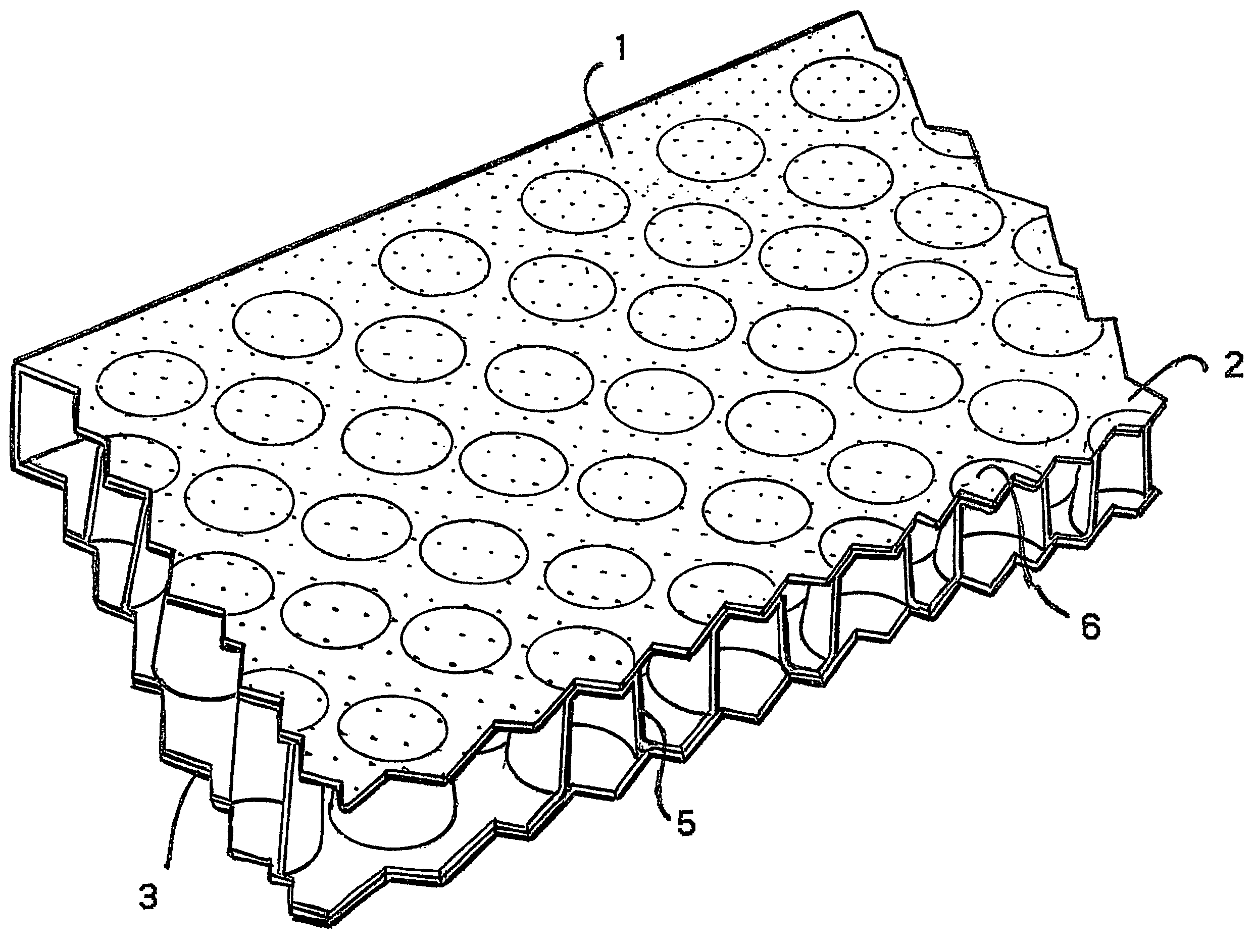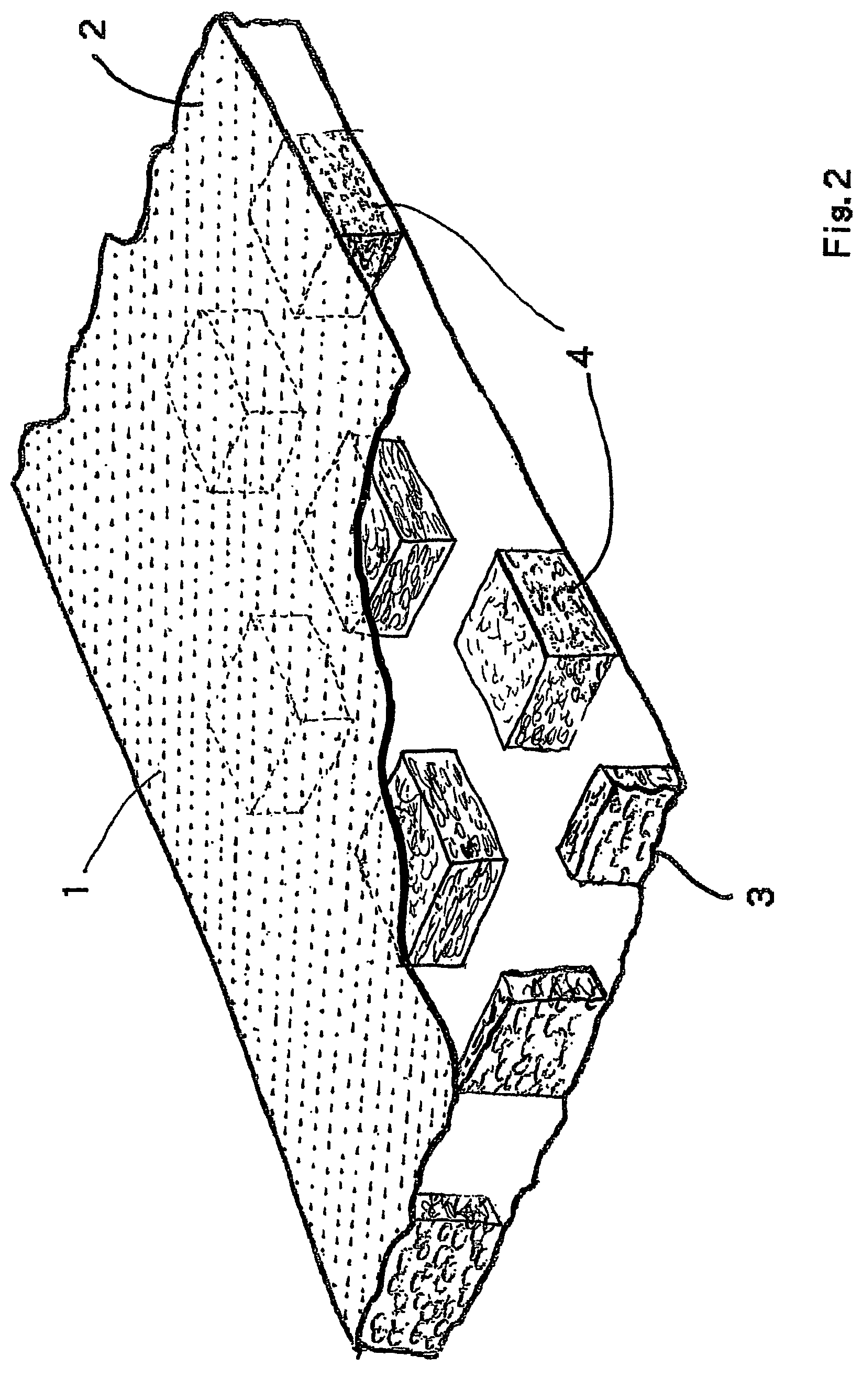Fluidising mat, container and container liner with such a mat
a technology of fluidising mats and containers, which is applied in the direction of conveyors, containers, loading/unloading, etc., can solve the problems of high repose angle, difficult flow properties, and large difficulty in discharge from shipping containers, and achieves low cost, low dusting, and easy transportation and installation.
- Summary
- Abstract
- Description
- Claims
- Application Information
AI Technical Summary
Benefits of technology
Problems solved by technology
Method used
Image
Examples
Embodiment Construction
[0048]Referring to FIG. 1 the fluidising mat comprises an upper, flexible sheet 2 of polyethylene or other polymeric material and a flexible gas impermeable lower sheet 3, also of polyethylene or other polymeric material. The upper sheet is rendered gas-permeable by the provision of micro-perforations 1 over the whole surface thereof. The micro-perforations are typically circular typically and of 0.1-0.2 mm diameter and are distributed at a density of typically 35,000 m−1. However, the shape and / or density of the micro-perforations can be adjusted, depending upon the volume of fluidisation gas required for different cohesive powders. The micro-perforations are preferably formed by puncturing using an appropriate diameter needle or other sharp instrument and may conveniently be formed by using a piercing machine or device. However, the micro-perforations may be formed by other means, e.g. by means of a laser. In view of their small size, the micro-perforations are illustrated schemat...
PUM
 Login to View More
Login to View More Abstract
Description
Claims
Application Information
 Login to View More
Login to View More - R&D
- Intellectual Property
- Life Sciences
- Materials
- Tech Scout
- Unparalleled Data Quality
- Higher Quality Content
- 60% Fewer Hallucinations
Browse by: Latest US Patents, China's latest patents, Technical Efficacy Thesaurus, Application Domain, Technology Topic, Popular Technical Reports.
© 2025 PatSnap. All rights reserved.Legal|Privacy policy|Modern Slavery Act Transparency Statement|Sitemap|About US| Contact US: help@patsnap.com



